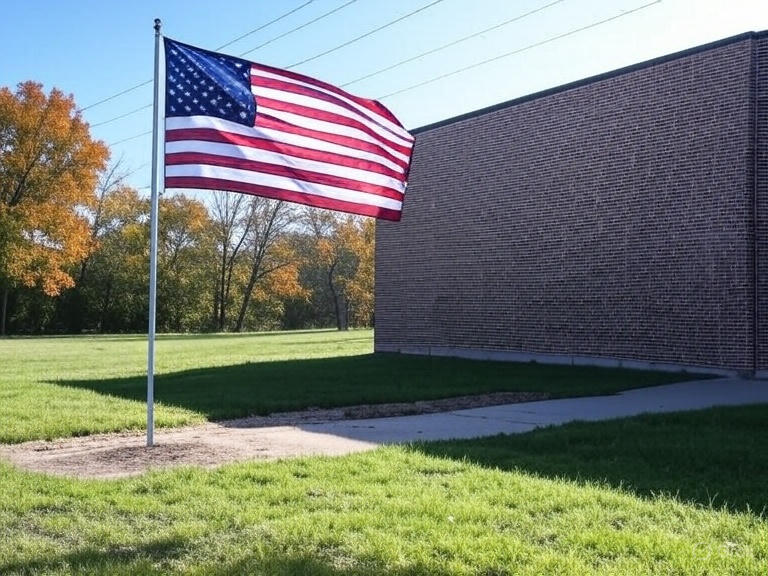5 Key Factors to Consider Before Installing a Flagpole in The US
Installing a flagpole is a proud way to display the American flag, but it requires careful planning to ensure safety and longevity. At Flags Unlimited in Grand Rapids, MI, we’ve helped countless homeowners, businesses, and municipalities install flagpoles that stand tall for years. Here are five key factors to consider before installation—plus how our expert services can make the process seamless. Contact us today to get started!
1. DISTANCE FROM BUILDINGS, TREES, AND POWER LINES
When placing a flagpole, ensure it’s far enough from buildings, trees, and power lines to prevent damage to the flag. The flag should only touch the flagpole—contact with other objects can cause tears, leading to more frequent replacements. The required distance depends on the flagpole height and flag size:
-
A 30’ flagpole typically uses a 5x8’ flag, requiring a minimum distance of 11’ (8’ flag width + 3’ for the flagpole thickness and flag movement in extreme weather).
Proper spacing ensures your flag remains in pristine condition, especially during Midwest windy winters.
2. FLAGPOLE VISIBILITY AND MAXIMUM IMPACT
Visibility is key when choosing a flagpole location. The size of the building or home affects the ideal flagpole height:
-
Single-story buildings: 20’-25’ flagpoles.
-
Two-story buildings: 30’-40’ flagpoles.
-
Industrial buildings: 50’ or taller.
In urban areas, place the flagpole closer to the road for visibility, while rural properties may need to account for larger setbacks. Consider your goals—do you want roadside attention or a more private display?
3. LOCAL ORDINANCES AND HOA RESTRICTIONS
Check with your local zoning authority to see if there are any restrictions on flagpole height or flag type in your area. Many localities will only allow flagpoles up to a certain height and only allow the USA flag to be flown. Many HOAs do not allow there to be in-ground flagpoles whatsoever. We can also check on these things for you if you're curious.
4. UNDERGROUND ELECTRICAL SAFETY
We dig flagpole holes by hand, typically 2’-5’ deep and 3’-6’ wide, which can risk hitting underground electrical lines. We’ll call 811 to identify hazards before digging, ensuring safety. If lines are present, we’ll relocate the flagpole to a safe spot. Planning a clear perimeter is crucial to avoid costly adjustments.
5. SUBSTRATE AND GROUND CONDITIONS
In Michigan, substrates like grass or clay are ideal for flagpole installation due to their stability. Avoid rocky or sandy areas (e.g., lakefront properties), as these can cause the flagpole to shift over time, even with a concrete base. We can assess your property to ensure a secure installation that lasts.

